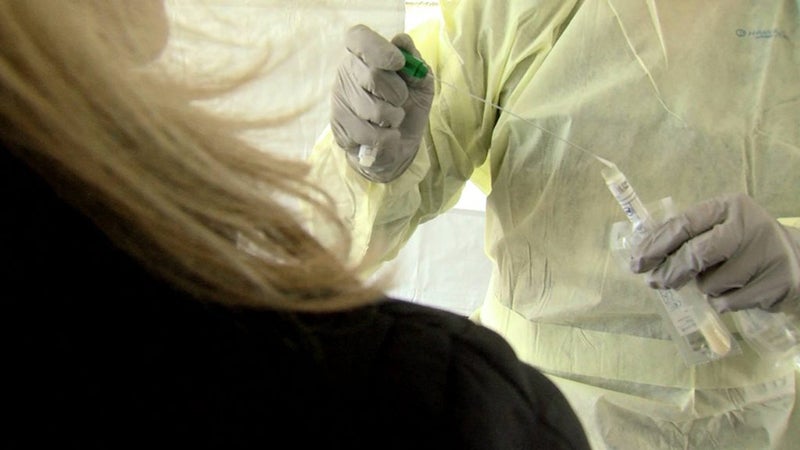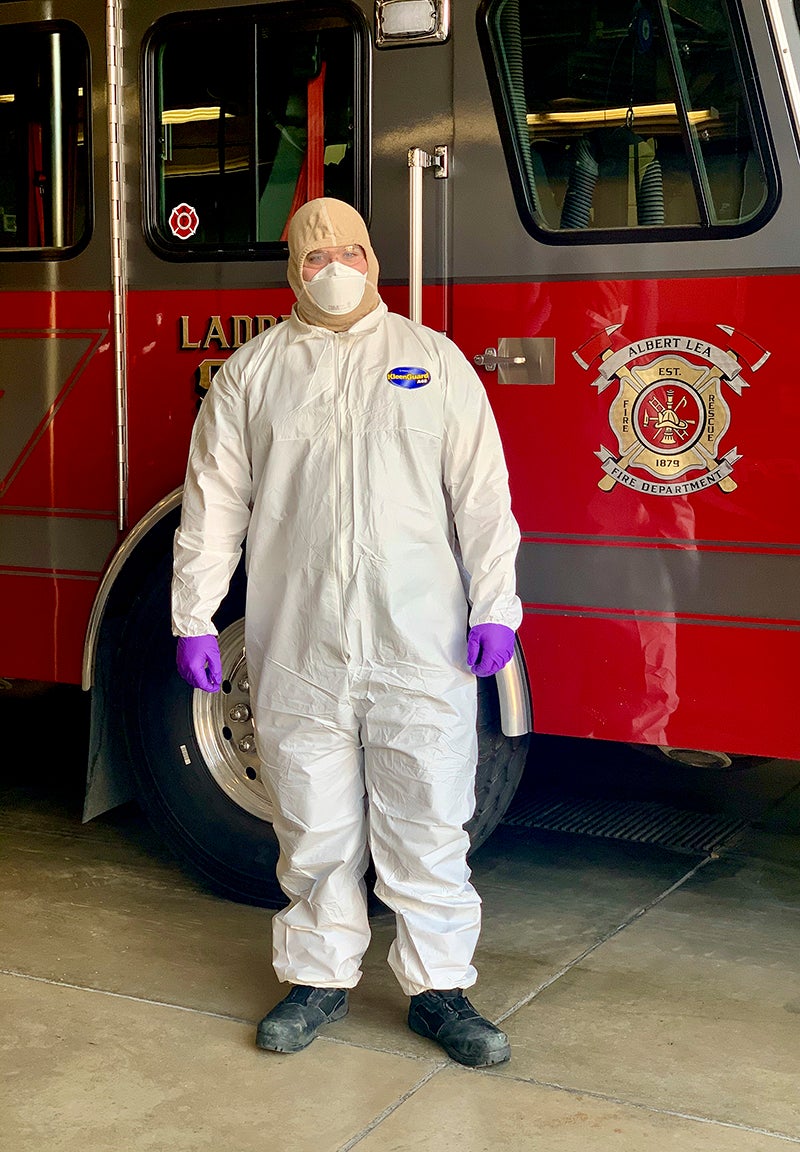First responders implement extra safety measures during pandemic
Published 3:39 pm Wednesday, April 1, 2020

- EMTs and other hospital staff are wearing extra emergency protective equipment to limit their risk to exposure of COVID-19. - Provided
|
Getting your Trinity Audio player ready...
|
Area emergency workers are taking extra precautions when responding to calls where there could be a risk of coming in contact with COVID-19.
Mayo Clinic Ambulance Medical Director Dr. Anuradha Luke said patients are asked screening questions that assess their risk of the virus, and if they have symptoms of COVID-19, then patients are always masked when emergency crews arrive.
Then, based upon the paramedics’ initial assessment or the assessment of a patient obtained by dispatchers over the phone, this determines what level of personal protective equipment EMTs wear during their response to reduce the risk of contracting the virus.
The first option is wearing a surgical mask, face shield, gloves and a gown, but if the EMTs anticipate having to perform an intervention on a patient that might generate the spread of aerosols, they add a N95 mask.
This type of mask is designed to form a seal around the nose and mouth and protect the spread of airborne particles to the emergency workers.
Luke said dispatchers and EMTs try to get as much information as they can from the patient or family members at a distance if possible so they can go into a call wearing the appropriate protection.
“Our crews are putting on their personal protective equipment to try to protect themselves, the patient and the community,” she said.
She said patients and families should understand they may get asked similar health questions multiple times by different people, but the goal is to make sure everyone is safe.
She noted while seeing emergency workers in heightened protective equipment can make people anxious, she hopes that once people know why they’re doing it and recognize that they’re aimed to prevent the potential spread of the virus, that it will alleviate some of those feelings.
She said staff had been trained in utilizing personal protective equipment before the threat of COVID-19 came around, though they are using it on a larger scale now.

Albert Lea firefighters are wearing N95 masks, safety glasses, gloves and a Tyvek suit when it is necessary for them to enter a suspected COVID-19 area on a medical call. – Provided
Dr. Deepi Goyal, Mayo Clinic Health System regional chairman of clinical practice and emergency medicine physician for southeast Minnesota, said once a patient enters a hospital setting, hospital workers follow similar protocol as the EMTs, utilizing two levels of personal protective equipment based on a patient’s symptoms and what type of interaction staff will have with the patient.
He said the virus is transmitted through respiratory droplets, so anything that can increase the production of those droplets — such as coughing or sneezing — places the situation in a higher-risk category.
When treating lower-risk patients, staff wear a gown, a surgical mask, a mask with a face shield and gloves, as well as following what he described as “meticulous” hand hygiene.
When more invasive procedures have to be performed, such as intubating a patient, that requires a greater level of personal protective equipment, including double layers of gloves and an N95 mask for tighter filtration to keep out even the smallest particles. The patient is also masked to keep respiratory droplets from spreading around the room.
He stressed how important it is for people to call before going to any of their appointments, so patients can be directed to the correct places and staff can have the correct protective equipment on when they arrive.
Albert Lea Deputy Fire Chief Jeff Laskowske said for precautions, firefighters, who also respond to most emergency medical calls, will also wear N95 masks, safety glasses, gloves and a Tyvek suit when it is necessary for them to enter a suspected COVID-19 area to work with an individual.
“We are working very closely with Mayo Clinic Ambulance Service to reduce all our exposures to the virus,” Laskowske said.
He said the firefighters have worn components of the personal protective equipment thus far but have not yet had to wear all of it on a call.
All fire personnel are asked to wear long sleeves, and masks, glasses and gloves are required on all medical calls.
“Only when we have all the questions answered yes that meets COVID-19 are we putting everything on,” he said.
Albert Lea Deputy Chief of Police Darren Hanson said the police department is changing its response to medical incidents and is no longer responding to most medical calls, unless it is a situation when someone needs CPR or has a heart attack, and an officer could provide life-saving measures.
Like the fire department, officers have been asked to wear long sleeves to limit potential contact of the skin, and in cases where officers would respond to a medical situation where COVID-19 could be a threat, they would wear safety glasses, gloves and a N95 mask.
Though the Police Department’s leadership still wants its officers to be active and visible in the community, he wanted to let people know officers may be taking more reports over the phone or calling people back instead of going in person for followup to past action calls. He said people should be aware that sometimes officers’ calls may show up as an out-of-area number.
Officers will respond as normal in the case a crime is called in while it is in progress, but they are encouraging people to come outside to talk to them when possible for other calls and then will still be practicing social distancing guidelines of remaining six feet apart.
“This is brand new to everyone,” Hanson said. “We’re listening to the guidance that’s put out in the state and nationally to do what we can to keep everyone safe.
“The nature of our profession, we can’t shelter in place, we can’t send everyone home to work. We’re trying to limit the contact we do have.”


